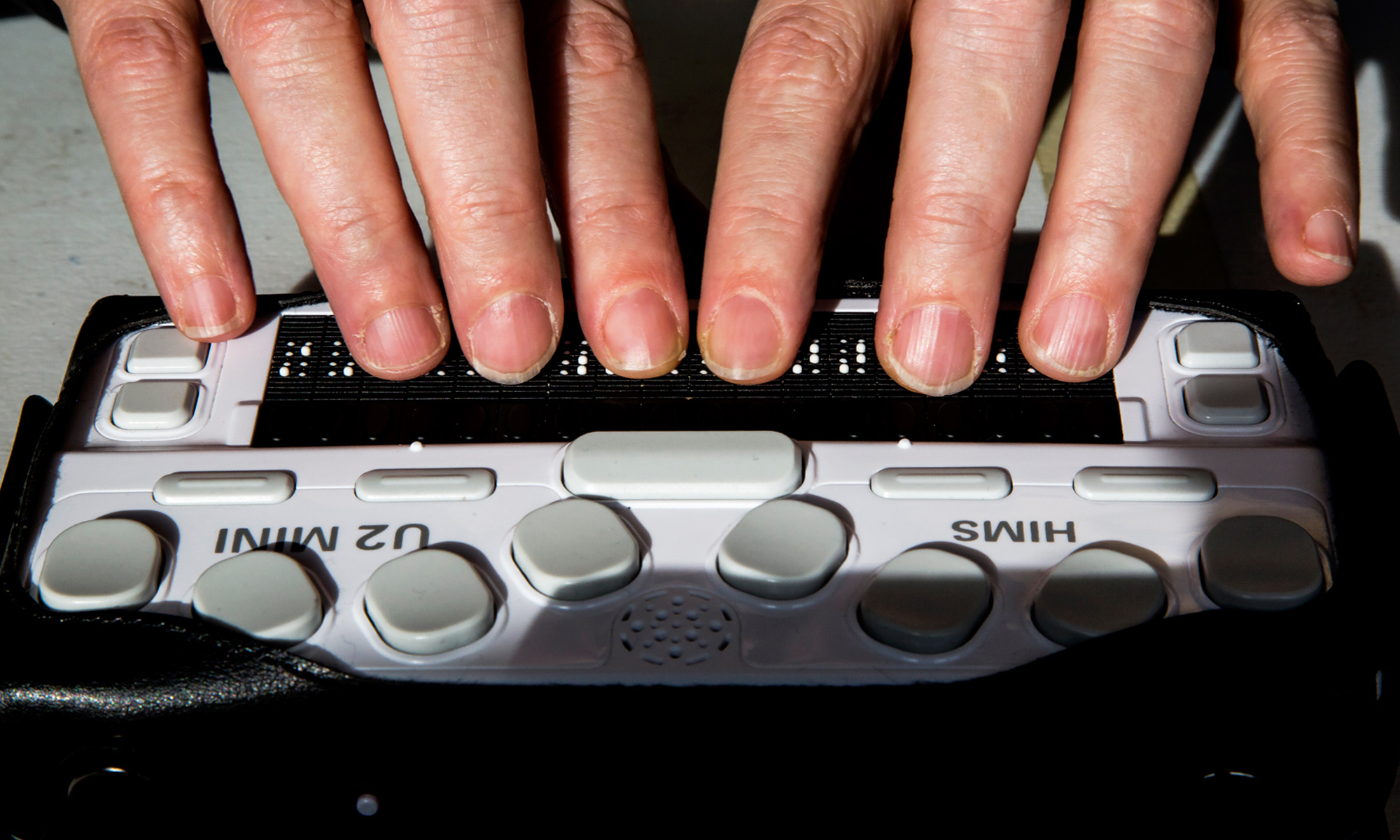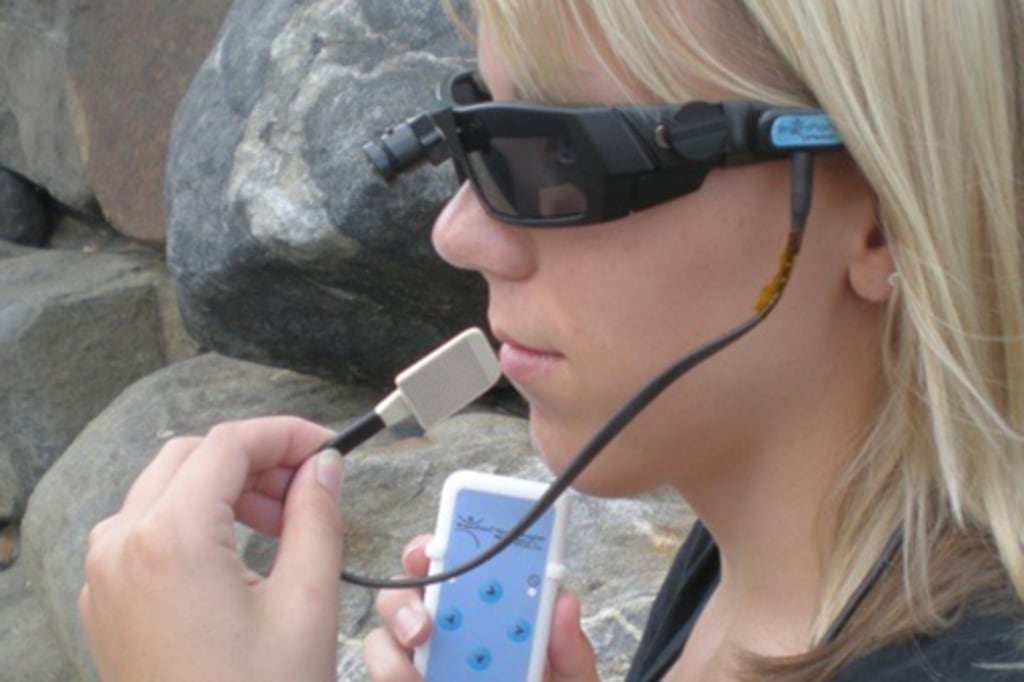Voice-Activated Assistive Devices: Simplifying Regular Tasks
Voice-Activated Assistive Devices: Simplifying Regular Tasks
Blog Article
Empowering Freedom With Assistive Modern Technology for the Blind
The combination of assistive innovation right into the lives of people with visual problems stands for a significant improvement in advertising freedom and self-sufficiency. From cutting-edge display visitors to sophisticated smart walking canes, these devices not only enhance everyday navigating and interaction yet also equip users to engage meaningfully in numerous elements of life. As we discover the myriad benefits and real-world applications of these modern technologies, it ends up being crucial to examine the hidden aspects that contribute to their performance and the capacity for future advancements in this crucial area.
Overview of Assistive Innovation

The advancement of assistive innovation is grounded in concepts of inclusivity and empowerment. Innovations in software application, hardware, and sensory enhancements supply individuals with alternatives customized to their details demands. From display readers that transform text to speech, to tactile gadgets that share info via touch, these tools transform the method people engage with their environments.
In enhancement to practical applications, assistive modern technology fosters greater social addition and engagement in different markets, including education and learning and employment (Mobility aids for visually impaired users). As research and development continue to evolve, the potential for assistive innovation to better improve the lives of aesthetically damaged individuals continues to be appealing, leading the method for a more fair society where everyone can prosper
Sorts Of Assistive Instruments
A range of assistive devices have arised to sustain individuals with aesthetic disabilities, each designed to meet particular needs and enhance day-to-day performance. These tools vary from low-tech services to modern developments, giving diverse options for individuals.
Low-tech gadgets include magnifiers and large-print materials that aid in reading and writing. Braille devices, such as Braille styluses and slates, make it possible for tactile analysis and interaction. Positioning and movement help, like white canes, help users navigate their environment securely.
On the greater end of the range, digital magnifying systems and screen readers supply considerable support. Electronic magnifiers permit users to enlarge text and photos on displays, while display visitors transform digital content right into synthesized speech, helping with access to details on computers and mobile phones.
Smart device applications also play a crucial duty, providing features like message recognition and navigating aid. Wearable modern technology, such as smart glasses geared up with increased reality, is becoming an appealing device to improve situational awareness.
Benefits of Assistive Innovation
The combination of assistive innovation dramatically boosts the top quality of life for individuals with visual disabilities. These modern technologies encourage users by advertising self-reliance, allowing them to browse their atmospheres better and carry out day-to-day tasks with greater ease. For circumstances, screen readers and magnification software enable individuals to access electronic details, fostering instructional and specialist chances that might have previously run out reach.
Furthermore, assistive gadgets such as wise walking canes and GPS applications give real-time navigating aid, enhancing wheelchair and safety. This increased autonomy not only improves self-esteem but also encourages social involvement, allowing users to take part even more fully in their neighborhoods.
Assistive modern technology likewise assists in interaction, helping users get in touch with others with voice acknowledgment and text-to-speech applications. This capacity is vital for preserving connections and accessing essential details.
Furthermore, the modification alternatives offered read the article with lots of assistive modern technologies guarantee that users can tailor tools to their specific requirements, further improving use and effectiveness. On the whole, the advantages of assistive technology for individuals with aesthetic disabilities are extensive, promoting a much more inclusive culture where everybody can seek their goals and goals.
Study and Success Stories
Highlighting the transformative effect of assistive innovation, various study highlight exactly how people with aesthetic impairments have actually efficiently integrated these tools right into their day-to-days live. One compelling instance entails a college student who made use of screen analysis software application to navigate on-line sources and academic products efficiently. This modern technology not only promoted her education but likewise improved her confidence in taking part in discussions and group jobs.
One more situation research includes a professional that employs a smartphone application created for navigating and things acknowledgment. By using this app, he has restored freedom in both his personal and workplace, permitting him to commute separately and engage with coworkers much more effectively.
In addition, a retired person shared her experience with braille e-readers, which allowed her to access a substantial array of literary works and stay gotten in touch with her area with publication clubs.
These success stories emphasize the essential function of assistive modern technology in promoting self-reliance, improving lifestyle, and advertising social assimilation for individuals with visual impairments (Assistive technology for the blind). By welcoming these innovative tools, users can conquer obstacles and confiscate possibilities that add to their specialist and individual satisfaction

Future Trends in Assistive Modern Technology
Development in assistive technology is poised to redefine the landscape of assistance for individuals with visual impairments. Emerging trends highlight the assimilation of local eye doctors expert system (AI) and artificial intelligence, which improve the capability of gadgets that aid with navigating and information ease of access. For example, AI-driven applications are currently efficient in translating visual information in real-time, allowing users to involve with their setting extra independently.
In addition, the growth of wearable modern technology is advancing quickly. Smart glasses geared up with enhanced reality (AR) can give audio summaries of surroundings, transforming exactly how users communicate with public areas. These devices not only promote autonomy but also foster social inclusion.
Additionally, the Web of Things (IoT) is making homes smarter, permitting smooth connectivity between assistive gadgets and day-to-day home appliances. This connection equips customers by making it possible for automated actions and voice-activated controls tailored to private demands.
Conclusion
In conclusion, assistive modern technology plays a crucial function in empowering individuals with visual disabilities by boosting their independence and interaction with their environments. The varied variety of applications and gadgets offered not just helps with navigating and communication yet additionally advertises social integration and chances for expert and individual growth. As innovations proceed in this area, the potential for boosting the lifestyle for those with visual disabilities will certainly broaden, cultivating higher freedom and empowerment.

Report this page